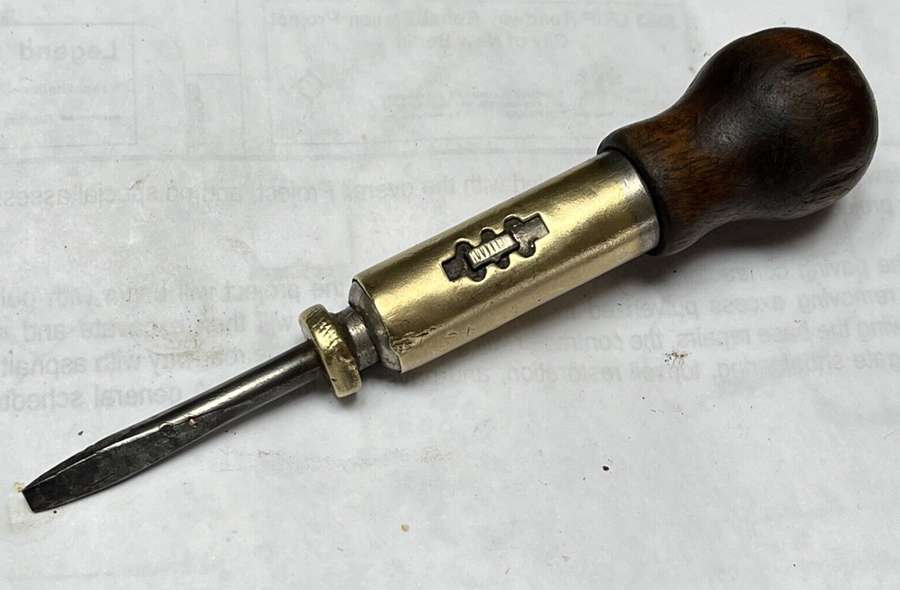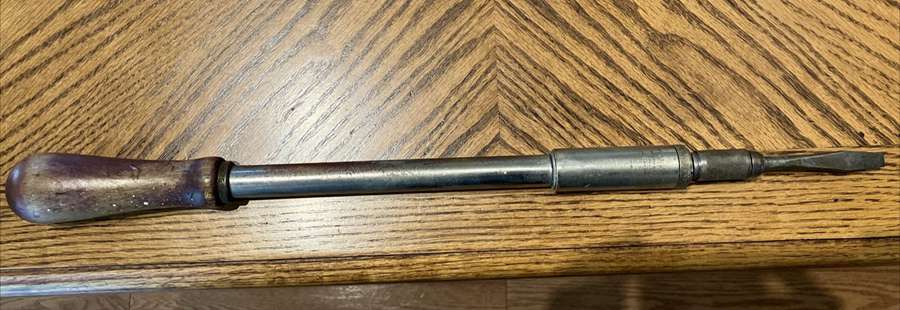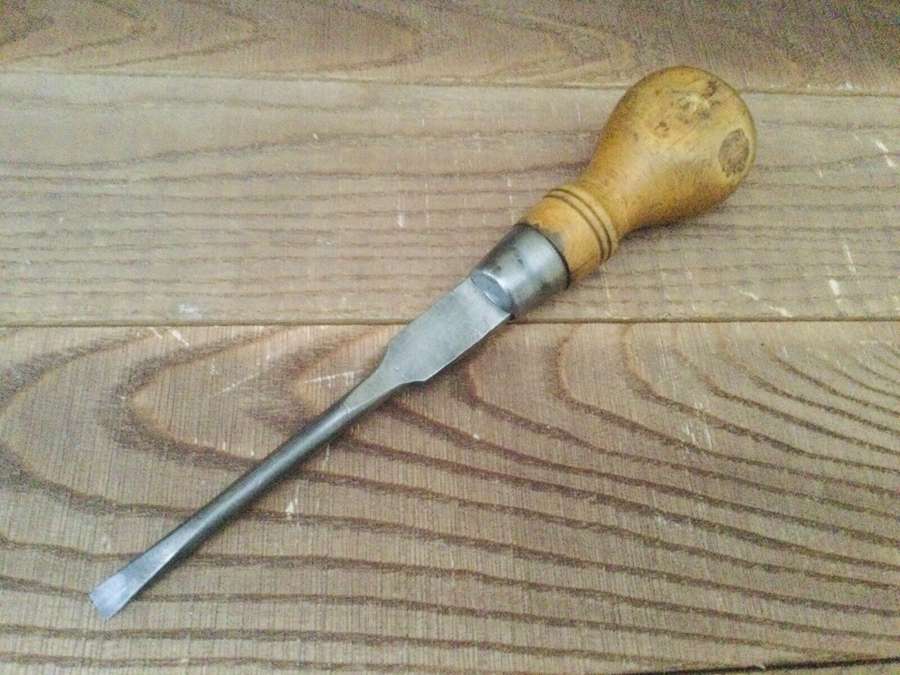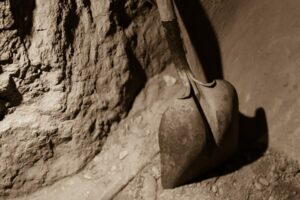Vintage screwdrivers, also known as turnscrews, have a rich history dating back to the mid-18th century. Initially manufactured as specialized tools for gunsmiths and clockmakers, these essential instruments gained popularity as more applications for screws emerged. Despite their humble beginnings, these classic tools are now sought after by collectors and enthusiasts who appreciate their historical significance, unique designs, and craftsmanship.
Identifying antique and vintage screwdrivers can be both a challenging and rewarding endeavor. Factors such as patina, signs of wear and use, and the presence of chipped paint or rust can help determine the age of a tool. Additionally, researching the history of the tool companies and examining their respective logos, patents, and trademarks can offer further insight into the origins of a particular screwdriver.
The value of vintage screwdrivers depends on a variety of factors, including age, rarity, and condition. For example, a 1980s Craftsman flat head screwdriver recently sold for $35, while a vintage Craftsman 14″ pipe wrench fetched $49.99 at auction. As with any collectible, a well-informed collector can make educated assessments of a tool’s worth and build a collection that is both meaningful and valuable.
Table of Contents
History and Significance of Vintage Screwdrivers
Vintage screwdrivers, a type of antique hand tools, hold significant historical value for collectors, enthusiasts, and tool users. These collectible items have been used in a range of applications, including woodworking and repairing various objects.
Timeline
- Mid-18th century: The first screwdrivers, also known as turnscrews, were developed as specialized tools for gunsmiths and clockmakers.
- 19th-20th century: As the need for screws increased in various industries, the production and design of screwdrivers also expanded. This period saw numerous innovation in this hand tool’s functionality and applications.
Notable Manufacturers
Some notable manufacturers of vintage screwdrivers include:
- Craftsman: A popular brand of vintage tools that has produced various types of screwdrivers over the years. Craftsman tools, including screwdrivers, have a high degree of collectibility due to their quality and iconic design.
- Notable Craftsman vintage screwdrivers in auctions:
- 1980s Craftsman flat head screwdriver: Sold for $35
- 1950s Craftsman electric drill: Sold for $42.49
- Notable Craftsman vintage screwdrivers in auctions:
- Stanley: A renowned American company that has been producing hand tools and woodworking tools since the 1800s. Their vintage screwdrivers, such as the pear-shaped wooden handle screwdrivers, are highly desired by collectors for their quality, design, and historical significance.
- Vintage Stanley pear-shaped wooden handle screwdrivers: Range between $15 – $60, depending on the brand and size
These vintage screwdrivers not only offer a glimpse into the past but also exhibit the skill and craftsmanship of their makers. Collecting and preserving these antique tools exemplify the importance of understanding and appreciating the evolution of hand tools throughout the years.
Identification Techniques
Logos and Stamping
Identifying vintage screwdrivers begins with looking for manufacturer logos and stampings. These marks are often found on the handle or shaft of the screwdriver and can help determine the tool’s origins. Many well-known manufacturers, such as Ford and other reputable tool makers, have distinct logos that can be cross-referenced with known examples found on tool collecting websites, in reference books, or in antique stores.
When examining logos and stampings, it’s essential to look for any manufacturer numbers, model designations, or other markings that may indicate the specific tool and its applications. For instance, gunsmiths, planes, and chisels may have specialized markings unique to their trade.
Materials and Construction
Vintage and antique screwdrivers are often made of traditional materials like cast iron or metal alloys. When identifying such tools, one should pay attention to the following:
- Worn wood or metal handles: Aged and weathered wood or metal handles may indicate an older tool.
- Construction quality: Older tools tend to have a higher degree of craftsmanship, such as well-fitted joints and carefully shaped handles.
- Metal composition: Some vintage screwdrivers were made from metals like brass or bronze, which may appear differently than modern alloy artifacts.
Patents and Trademarks
Another crucial aspect of identifying vintage screwdrivers is searching for patents and trademarks. Patents can reveal information about the screwdriver’s design and history, while trademarks can help pinpoint the manufacturer and clarify any logos or stampings found on the tool.
To locate patents and trademarks, one can refer to various resources such as:
- Tool collecting websites or forums: Online communities dedicated to tool collecting often share information and images of various tools, patents, and trademarks.
- Patent databases: Online databases, such as the one provided by the United States Patent and Trademark Office, can be useful for verifying the vintage tool’s authenticity.
- Reference books: Specialist publications and reference books often contain guides to patents and trademarks that can help hobbyists in their search for accurate tool identification.
In conclusion, identifying vintage screwdrivers involves a combination of examining manufacturer logos, construction materials, and patents or trademarks. By using these techniques and consulting various resources, collectors can confidently identify and appreciate the value of these unique tools.
Types of Vintage Screwdrivers
Turnscrews
Turnscrews, also known as vintage screwdrivers, first appeared in the mid-18th century and were initially manufactured as specialized tools for gunsmiths and clockmakers. As screws became more widespread in various applications, the demand for turnscrews increased. Vintage turnscrews are often identifiable by their wooden handles and the presence of a brass or steel blade. Some notable brands, such as Stanley, produced these early forms of screwdrivers. Collectors value these items depending on factors like age, condition, materials, and manufacturer.
Specialized Screwdrivers
In addition to standard turnscrews, various specialized vintage screwdrivers were designed for unique purposes and specific industries. Some of these specialized screwdrivers include:
- Ratcheting Screwdrivers: These screwdrivers feature a mechanism that allows driving the tool in one direction while the handle moves in both directions. Vintage ratcheting screwdrivers often have pear-shaped wooden handles and can range in value from $15 to $60 depending on the brand and size.

- Cabinetmaker’s Screwdrivers: As the name suggests, these screwdrivers were designed specifically for cabinetmakers. They typically have a wooden handle and a long, thin blade, perfect for working on intricate cabinetry work. These vintage screwdrivers are especially sought after by woodworkers and collectors.
- Yankee Screwdrivers: Stanley also produced Yankee screwdrivers, a specific type of push ratchet screwdriver. They were popular due to their speed and efficiency and are still in use today, although vintage models are highly collectible.

When identifying and valuing vintage screwdrivers, it is essential to consider factors like patina, signs of wear and use, as well as the presence of tarnish, rust, or chipped paint. Determining the age and manufacturer of these tools can also aid in assessing their value and appeal to collectors.
10 Factors to Identify & Value Vintage Screwdrivers
1. Age
The age of a vintage screwdriver is an essential factor when considering the value and appraisal of the tool. Older screwdrivers tend to have a higher value due to their rarity and historical significance. Here, we will discuss the impact of age on the value of vintage screwdrivers and provide a valuation table for different age brackets.
It is important to keep in mind that other factors, such as condition and rarity, can also significantly affect a vintage screwdriver’s value. However, this section will focus solely on age as a determining factor in the valuation process.
| Age Bracket | Average Valuation |
|---|---|
| Pre-1900 | $100 – $150 |
| 1900-1910 | $80 – $120 |
| 1910-1920 | $70 – $100 |
| 1920-1930 | $60 – $90 |
| 1930-1940 | $50 – $70 |
| 1940-1950 | $40 – $60 |
| 1950-1960 | $30 – $50 |
As the table above illustrates, screwdrivers from the pre-1900 era have the highest average valuation, ranging from $100 to $150. This high value is due to their age, which makes them rarer and more sought after by collectors. As the age of the screwdriver decreases, so does its average valuation – the 1950-1960 bracket has the lowest valuation, ranging from $30 to $50.
2. Brand
Vintage screwdrivers come in various brands, each with specific characteristics that could impact their value. Some popular vintage screwdriver brands include Stanley, Craftsman, and Bridgeport Hardware Mfg. These brands have unique features that set them apart, such as the materials used, handle designs, and mechanisms.
Stanley, a well-known tool manufacturer, produced various types of vintage screwdrivers, including the Yankee series. The Yankee series specifically featured spiral ratchet screwdrivers, which can fetch a higher price for their unique design and practicality.
Craftsman, another renowned toolmaker, made a range of screwdriver sets in the mid-20th century. These sets were known for their quality and durability, making them highly sought after by collectors. A set of vintage Craftsman screwdrivers in good condition and original packaging can command a higher price.
Bridgeport Hardware Mfg. branded their screwdriver tools featuring Nickel Molybdenum, which indicated the material used in their production. These markings give the tools a distinctive appearance, adding to their collectible appeal.
The table below provides an approximate valuation for different brands of vintage screwdrivers:
| Brand | Average Valuation |
|---|---|
| Vintage Stanley | $15 – $60 |
| Vintage Craftsman | $35 – $120 |
| Bridgeport Hardware Mfg | $20 – $50 |
3. Materials
Vintage screwdrivers are often made from a combination of materials such as wood, brass, and steel. The quality and condition of these materials can greatly impact the value of the screwdriver.
The handle of a vintage screwdriver can be made from various types of wood, such as cherry, walnut, or maple. The type of wood used and its condition will influence the overall value. Screwdrivers with rare wood handles or intricate carving designs are likely to fetch higher prices.
Brass and steel are commonly used for the metal components of a vintage screwdriver, including the shank and ferrule. Brass components typically display a warm, golden patina, while steel parts may show signs of age and use such as tarnish or surface rust. Screwdrivers with brass components are often more sought-after by collectors and can command higher prices.
The quality of the manufacturing can also impact the value of a vintage screwdriver. High-quality screwdrivers often have sturdy construction, well-fitted parts, and minimal wear, which can be desirable qualities for collectors.
Below is a table illustrating the average valuations for vintage screwdrivers based on the different materials involved.
| Material Factors | Average Valuation |
|---|---|
| Rare wood handle | $80 – $120 |
| Intricate carving design on handle | $100 – $150 |
| Brass components | $50 – $100 |
| Steel components (minimal wear) | $30 – $60 |
| High-quality manufacturing | $60 – $100 |
4. Size
Vintage screwdrivers come in various sizes and shapes, impacting their value and collectability. The size of the screwdriver refers to the width of the tip, while the length of the tool is also an essential factor when determining its value. Various screwdriver types, such as flat-head or Phillips, as well as ratchet screwdrivers, can influence the pricing.
When it comes to size, smaller vintage screwdrivers (such as those used in watchmaking or intricate jobs) can hold a different value compared to larger, more robust tools used for general purposes. Rare sizes or types of screwdrivers typically garner more significant interest among collectors, increasing their value. Below is a table displaying average valuations for different sizes of vintage screwdrivers:
| Size (Tip Width) | Average Valuation |
|---|---|
| Small (Below 3mm) | $20 – $35 |
| Medium (3-6mm) | $40 – $60 |
| Large (Above 6mm) | $75 – $100 |
In addition to the size, the handle of the vintage screwdriver is another factor that can influence its value. Collectors often seek well-preserved wooden handles, as these indicate the age and authenticity of the tool. Pear-shaped wooden handles are commonly found on vintage ratcheting screwdrivers and can increase the value of the tool. The condition of the handle, such as the presence of any cracks or chips, can also affect valuation.
Vintage screwdrivers with uniquely shaped or sized handles might be more sought-after by collectors, further impacting their value. A table of average valuations based on handle size and shape is provided below:
| Handle Size/Shape | Average Valuation |
|---|---|
| Small Wooden Handle (Below 4 inches) | $25 – $40 |
| Medium Wooden Handle (4-6 inches) | $45 – $65 |
| Large Wooden Handle (Above 6 inches) | $80 – $100 |
| Unique Shape (e.g., Pear-Shaped) | $100 – $120 |
The size and condition of a vintage screwdriver can significantly impact its value and collectability. Having a good understanding of the various sizes, shapes, and types of vintage screwdrivers will help collectors make informed decisions when researching their investments.
5. Types
Vintage screwdrivers, also known as turnscrews, have a long history, dating back to the mid-18th century. Initially designed as specialized tools for gunsmiths and clockmakers, screwdrivers later became more widespread and have since been manufactured in a variety of types and forms, each designed for specific uses.
There are several factors that would impact the value of vintage screwdrivers, including their age, condition, and rarity. To better understand the impact of these factors on their value, the following valuation table provides a summary of average prices for different types of vintage screwdrivers:
| Vintage Screwdriver Type | Average Valuation |
|---|---|
| Wooden Handle Flathead Cabinetmaker | $40 – 100 |
| Jeweler’s Miniature Set | $50 – 150 |
| Antique Ratcheting Screwdriver | $75 – 200 |
| Solid Brass Handle Flathead | $60 – 120 |
| Wooden Handle Yankee Push Drill | $40 – 80 |
| Gunsmith’s Antique Set | $100 – 300 |
| Clockmaker’s Antique Set | $150 – 350 |
Since their inception, vintage screwdrivers have evolved to address different applications and meet specific needs. Some common types of vintage screwdrivers include flathead cabinetmakers screwdrivers, which typically have a comfortably-shaped wooden handle and well-proportioned blade; jeweler’s miniature sets, designed for precision work on small parts or delicate mechanisms; antique ratcheting screwdrivers, with a unique mechanism that allows for turning the screwdriver in one direction while holding the handle stationary; solid brass handle flathead screwdrivers, which feature an all-brass construction and are mostly decorative; wooden handle Yankee push drills, used for drilling pilot holes for screws in woodworking applications; and specialized sets designed for gunsmiths and clockmakers that include screwdrivers and other tools specifically crafted for these trades.
It is vital for collectors of vintage screwdrivers to understand the nuances of different types in order to properly assess their value and significance. By considering factors such as age, condition, and rarity, collectors can make informed decisions when adding to their collections. This knowledge empowers collectors to identify, appraise, and appreciate the variances and intricacies of vintage screwdrivers, a crucial aspect of any successful collecting endeavor.
6. Completeness
When evaluating vintage screwdrivers, the completeness of the tool plays a significant role in determining its value. Screwdrivers with missing parts or heavy wear and tear will generally have lower value compared to those preserved in good condition.
Original packaging can also impact the value of a vintage screwdriver. Tools that have been kept in their original packaging are typically more sought-after and thus more valuable than those without. This factor can lead to a considerable difference in the range of prices paid for these pieces.
Materials and craftsmanship should also be taken into account when assessing a vintage screwdriver’s completeness. Notable brand names and well-crafted handles with unique designs or materials, such as wooden or bone handles, can positively influence the valuation.
Here is a table illustrating a few common factors that can affect the completeness of vintage screwdrivers, along with their average valuation:
| Completeness Aspect | Average Valuation |
|---|---|
| Mint Condition with Original Packaging | $60 – $80 |
| Good Condition, without Packaging | $40 – $60 |
| Minor Damage or Missing Parts | $20 – $40 |
| Heavily Worn or Rusty with No Packaging | $10 – $20 |
When estimating the value of completeness for a vintage screwdriver, it’s vital to consider these factors and observe the condition of the tool carefully. Keep in mind, other factors such as the rarity and brand of the screwdriver may also significantly influence the overall valuation.
Final Thoughts
In the world of vintage screwdrivers, there are a few key factors to consider when seeking to identify and determine the value of these tools. Common characteristics like the type of handle, unique mechanisms, and age are essential indicators to guide collectors during their search.
One popular collectible screwdriver is the ratcheting screwdriver, known for its unique functioning mechanism that allows the handle to move in both directions while driving the tool in one direction. Vintage models often have pear-shaped wooden handles and can range in cost from $15 to $60 depending on the brand and size.
Beyond ratcheting screwdrivers, it is important to remember that antique tools must be at least 100 years old, while vintage tools need to be at least 20 years old. To determine the age of a screwdriver, examine the patina of the item. Signs of use, wear, tarnish or rust can assist in identifying the age of the tool.
Perfect Handle screwdrivers are another collectible variety, with vintage models often found on auction websites or in antique tool collections. These screwdrivers are characterized by their distinct and comfortable handle design, and can potentially fetch higher prices based on their rarity and condition.
In summary, identifying and valuing vintage screwdrivers requires careful consideration of factors such as age, patina, handle design, and unique mechanisms. By understanding these critical elements, collectors can build their collections with accuracy and knowledge that will, in turn, enhance their passion for these timeless tools.
FAQ
How can I identify old screwdrivers?
To identify vintage screwdrivers, look for signs of age such as patina, signs of use, and wear, as well as tarnishing or rusting. Additionally, examine the handle material and design, as some older screwdrivers may have wooden or unique handles. Similarly, the presence of a maker’s mark or logo on the shank or blade indicates its origin and age.
What factors determine the value of vintage screwdrivers?
The value of vintage screwdrivers depends on various factors, including:
- Age: Generally, older tools are more valuable, with antiques being at least 100 years old, and vintage between 20 and 100 years old.
- Rarity: Scarce and unique designs tend to be more sought after by collectors and may fetch higher prices.
- Condition: Better-preserved tools with minimal damage fetch higher prices.
- Maker’s Mark: Screwdrivers from well-known manufacturers, particularly if identified by a maker’s mark, logo, or patent number, can command higher values.
How can I learn more about the history of screwdrivers?
Exploring resources such as Alloy Artifacts, an online tool museum, can offer insights into the history of 20th-century hand tools, including screwdrivers. Additionally, you can research patents, trademarks, and logo images to help identify and research the originating companies and designers.
Are there any valuable vintage screwdriver brands or models?
Yes, certain brands and models of vintage screwdrivers are more sought after and valuable. Collectors often seek out screwdrivers from well-established manufacturers such as Craftsman, Stanley, and Snap-on, among others. Their tools, exhibiting high-quality craftsmanship and design, fetch higher prices in the collector’s market.










